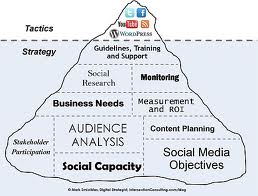 At the end of yesterday’s post titled “Are non-profits yelling at their donors using social media?” I promised that I’d share a few revelations from a social media conference that Marissa and I attended last week hosted by SkillPath Seminars. Today, we’re talking about two of the most popular social media questions that I’ve been asked by non-profit organizations:
At the end of yesterday’s post titled “Are non-profits yelling at their donors using social media?” I promised that I’d share a few revelations from a social media conference that Marissa and I attended last week hosted by SkillPath Seminars. Today, we’re talking about two of the most popular social media questions that I’ve been asked by non-profit organizations:
- Which social media platforms should your non-profit organization use to speak to donors and supporters?
- How can your agency do a better job at engaging its supporters using social media and gain more traction?
Let me first say that I highly recommend this SkillPath training conference to all non-profit professionals who are responsible for managing their agency’s social media communities. You can find more information at the other end of the link that provided above. (No, I was not paid to say this)
When looking through the conference materials on this subject, they list more than 20 different platforms that companies are using to market their efforts. However, it came as no surprise that Facebook, Twitter and LinkedIn were the top three “networking platforms;” YouTube was the most popular “promotional platform;” and various blogging platforms (e.g. WordPress, Blogger, and Tumblr) were the most popular “sharing platforms”.
Our trainers suggested that a company should give serious consideration to developing a presence on all three platforms and five sites. While that might sound easy enough, it becomes more complicated when you consider that you’ll be saying different things in each of these places. You need to figure out who your target audiences are and which social media platforms are best at communicating with them.
 As I sat through many of the sessions, I found myself trying to translate the training curricula into non-profit speak. Assuming that my universal translator is working well, I concluded the following:
As I sat through many of the sessions, I found myself trying to translate the training curricula into non-profit speak. Assuming that my universal translator is working well, I concluded the following:
- Facebook looks like a great stewardship tool where you can engage donors and show your “friends” how their contribution is being put to good use.
- Twitter and its 140 character limitations could be an awesome cultivation tool where you catch the attention of prospects and drive them to a place where they learn more about your mission.
- LinkedIn is more than a human resource tool. It is a place to build relationships with potential corporate supporters and identify special event sponsors.
- YouTube can be a multi-purpose resource development tool and used in many different ways. However, it might be best used for raising brand awareness and developing a pool of interested prospects who you are positioning for cultivation activities.
- Your blog is a friendly online place to engage in conversations with supporters and potential supporters. You can establish yourself as a “thought leader,” advocate and engaged listener.
- All of these social media tools should be used to drive traffic to your website where there is more information, volunteer forms, donation pages, etc.
Yes, this is a lot of work and at some point you’ll need to frame your agency’s strategy in a written social media plan. While it is easy to think that it might end up on the fundraising department’s plate, I think there is an opportunity for thoughtful organizations to transform their agency into a “social company” and share the workload and transform your workplace culture.
Enough on platforms.
 What about building momentum? Gaining traction? Engaging more deeply?
What about building momentum? Gaining traction? Engaging more deeply?
The following are just a few of the suggestions offered by our SkillPath trainers:
- Write content that is interesting to your reader. (If you don’t know what that is, then go ask them)
- Host contests
- Offer coupons
- Make your content interactive
- Include links to things that your audience will find interesting and useful
Perhaps, one of the best ideas I heard was that a picture is worth a thousand words. Write less and post more pictures of your mission, your programs, your volunteers, and your donors. This one simple idea that will probably result in increased traffic, more content sharing, and deeper engagement.
Is your agency using social media? How’s it going? Do you feel like it is working? Why or why not? Please scroll down and use the comment box to share your thoughts. We can all learn from each other.
Here’s to your health!
Erik Anderson
Founder & President, The Healthy Non-Profit LLC
www.thehealthynonprofit.com
erik@thehealthynonprofit.com
http://twitter.com/#!/eanderson847
http://www.facebook.com/eanderson847
http://www.linkedin.com/in/erikanderson847




